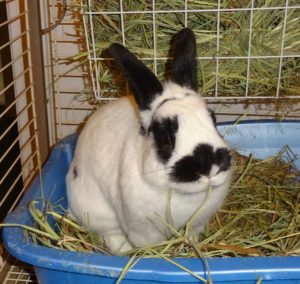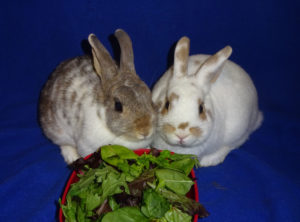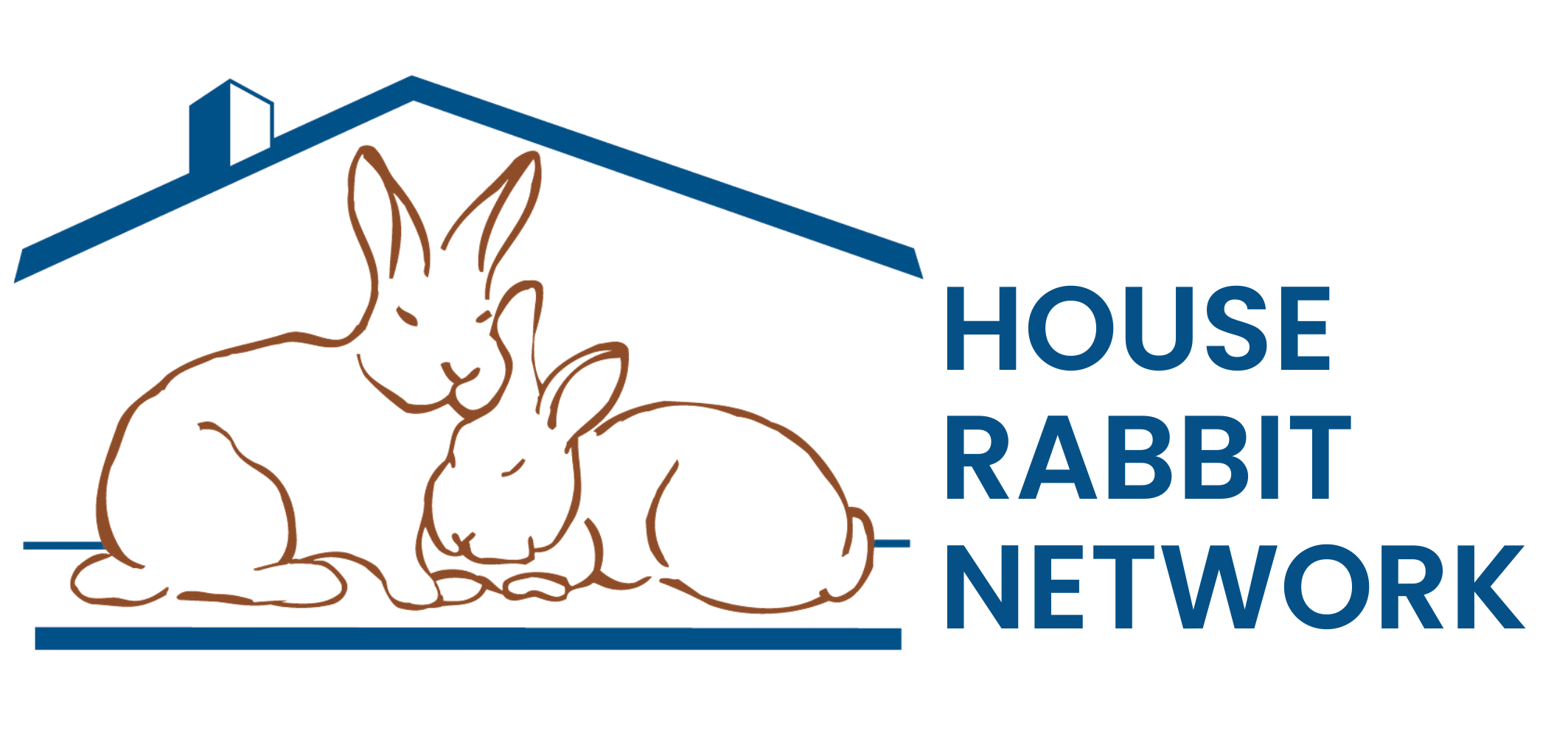The Well-Rounded Rabbit Diet
Rabbits are interesting creatures with delicate gastrointestinal systems that need a well-balanced diet. The food they eat should have lots of fiber, and they should be eating all day long. Proper diet helps maintain your rabbit’s weight, teeth and keeps them healthy.
Hay

Hay, hay and more hay. The most important thing in your rabbit’s diet is hay. Rabbits should eat about their body size in hay every day, and hay should comprise 75-95% of their intake. It’s essential that they have hay for a number of reasons. First, they need to be eating most of the day to keep their digestive tract moving. They are hindgut fermenters and need to have their gut moving all the time. Second, eating lots of hay helps maintain their teeth. Since their teeth are constantly growing, the chewing helps prevent molar spurs and keeps the incisors at the correct length.
For most adult rabbits, you should be feeding a grass hay. Grass hays include timothy, brome, orchard grass, and oat hay. For nursing mothers and juvenile or baby rabbits, a legume hay like alfalfa is preferred. It’s higher in calcium and calories which is necessary for the babies to grow and the mother to nurse.
Greens / Salad

Giving your rabbit a nice selection of greens to eat is important for nutrition. Just like humans, variety is important. We recommend at least three different greens each day and offering different greens over the weeks. You can choose from different lettuces, such as red leaf lettuce, green leaf lettuce, romaine, chicory, and escarole to give a variety of nutrients. Carrots are high in sugar and should be considered a treat. There’s a lot of discussion about feeding high calcium greens (e.g., parsley, kale, collard greens) with many different opinions. For a normal, healthy rabbit, some calcium is good for dental and bone health. Veggies high in calcium are fine in moderation. For rabbits with sludge or urinary tract issues, some vets recommend eliminating high calcium veggies. Other vets think the water content in greens will help flush out the calcium so you don’t need to worry about it. If you have any concerns, consult your veterinarian.
Pellets
You’ll hear different opinions on pellets. Some people say they aren’t needed and shouldn’t be fed. Others believe that a limited amount will help make sure they are receiving all the necessary nutrients. If you feed pellets, make sure you limit the quantity as pellets are the leading cause of obesity in rabbits. General guidelines say to feed 1/4 cup pellets per 5 pounds of body weight. When choosing a pellet, the most important thing is to get a straight pellet. No seeds, treats, or other items added in. Look for one that is 14-16% protein (16% for long-haired rabbits), high fiber (> 20%), and low fat (< 2.5%).
Treats
Who doesn’t want to spoil their bunny and give treats? When feeding treats, the key is to limit them. I also recommend healthier treats you can purchase at the grocery store over stuff you can purchase at the pet store. I would avoid anything with added sugar (such as yogurt drops). Most rabbits go nuts for banana. A thin 1/4-1/2 inch slice, and you might see the “banana butt twitches.” You can also feed raisins. Small baby carrots are also a good choice. Just work on resisting those pleading rabbit eyes that always want more!
Cecatropes
Rabbits have two different types of poop. They have the dried brown balls that we’re used to seeing, and cecals or “night droppings.” Cecals or Cecatropes are a dark brown, have the consistency of toothpaste, and often resemble a bunch of grapes. While humans might find this disgusting, rabbits eat these. It’s important for their health and helps them maintain healthy gut flora. With a normal, healthy rabbit you will rarely see them because rabbits tend to eat them straight from their anus. If your rabbit becomes disabled and can’t eat his own cecals, you’ll need to help them eat them by scooping them up and presenting them so they can eat them. In cases where your rabbit has diarrhea or hit intestinal flora is off, feeding healthy cecals from another rabbit can help your rabbit recover.
Salt or mineral licks aren’t needed. Many rabbits will not use them either, so they are just a waste of money.
When you bring your rabbit in for his annual exam, you should discuss your rabbit’s diet with your veterinarian. While there are general guidelines, you can fine tune the diet to your specific needs. Your veterinarian can help make sure you are feeding the correct food for your bunny, helping to maintain his health.
— Suzanne Trayhan
Photo caption for black and white bun eating hay:
Ollie loves eating hay.
Photo caption for two buns eating salad:
Zoe and Zeke enjoy a variety of greens.
